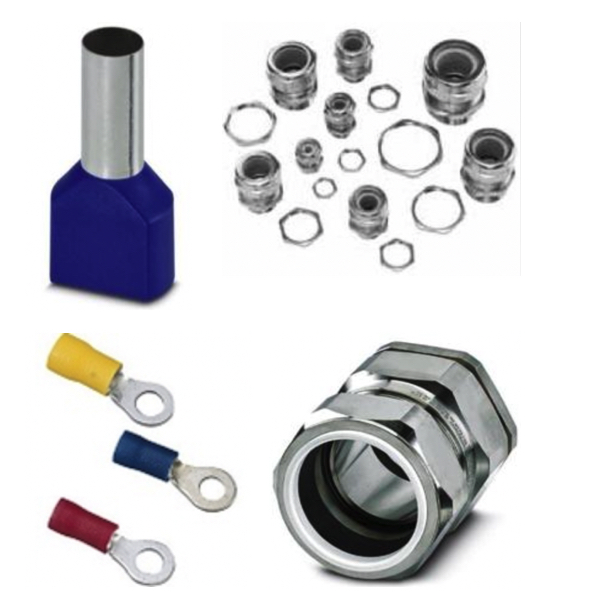Wire & Cable Accessories

Cable glands or cord grips are devices that are secured to the end of an electrical cable and then attached to a piece of equipment. The main purpose of a cable gland is to provide a tight seal at the entry point and to prevent the cable from being twisted or pulled from the equipment.
Cable strains are located at the base of a connector where the cable meets the connector to provide stress relief and prevent breaking. Cable strains can be segmented or look like a sleeve to allow some bending but still provide adequate support.
Cable ties are a type of fastener designed to hold electrical wires and cables together. Cable ties are generally made of nylon with a slot through which a notched cable is threaded and pulled back to lock. Some cable ties are straps with velcro for easy fastening and unfastening.
 Label Printers Accessories
Label Printers AccessoriesMore Information about Wire & Cable Accessories
Cord grips or cable glands are devices that are secured to the end of an electrical cable and then attached to a piece of equipment. The main purpose of a cord grip is to provide a tight seal at the entry point and to prevent the cable from being twisted or pulled from the equipment.
Cable mounts or mounting pads can be used in conjunction with cable ties to secure bundled cables and wires to a fixed support or piece of equipment.
Wire connectors (ferrules) are small metal rings or tubes that are placed over stranded wire that is stripped from insulation and crimped into place. This protects the wire strands from fraying and allows them to be inserted into a terminal compartment.
Wire terminals are designed to terminate a conductor that will attach to a fixture to make an electrical connection. They are used in places where repeated assembly and disassembly is required.
5 Industrial Wiring Tips and Tricks
Wire Type
MTW is typically used in industrial control panels. The flexibility of the wire allows it to be easily maneuvered through wire ducting. THHN wire is commonly found in homes or commercial buildings. The rigidity of the wire makes it easier to pull through conduit. XHHW wire is similar to THHN but provides a more protective insulation.
Wire Color
The National Electrical Code (NEC) or UL are great points of reference when trying to decide what colors of wire to use. For example, UL standard states that a ground wire should always be green, an AC hot or live wire should be black and AC neutral should be white. These are just a few examples of UL code requirements.
Wire Size
A simple rule of thumb when selecting wire size is, the higher the current, the larger the wire. It is also important to consider the bend radius of the wire. If a wire is bent too sharply, the conductors within the insulation can be damaged.
Wire Connection
It is important to make sure that the wire is connected properly and that enough torque has been applied. If enough torque is not applied to the electrical connection, the wire can become loose over time resulting in a poor electrical connection. Too much torque can damage the the wire and electrical equipment.
Wire Labels
Labeling is essential when performing any kind of electrical wiring. Proper labeling will allow others to easily identify the function of a wire, where it is going and where it has been. It can also make troubleshooting on a panel or any electrical device much easier when worked on at a later date.

